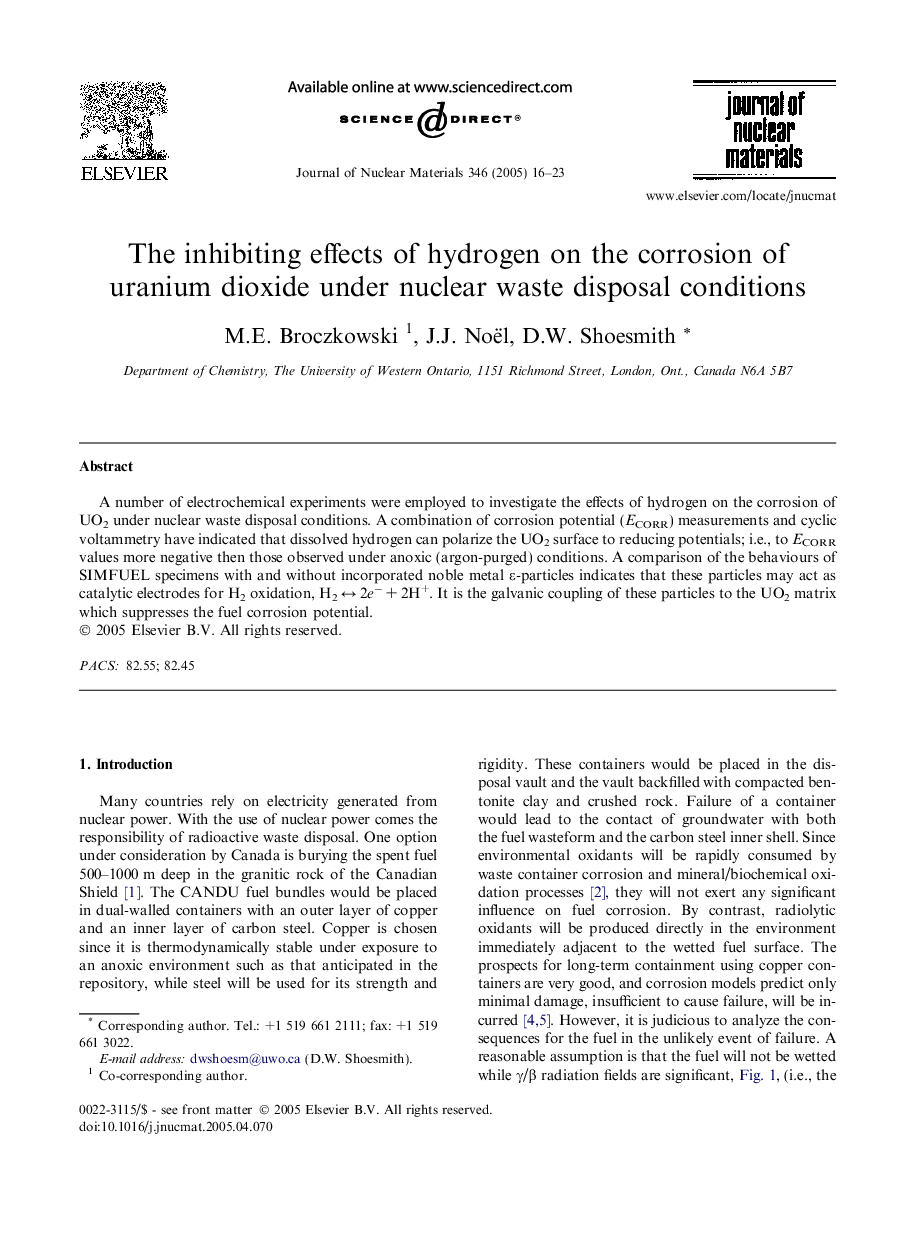| Article ID | Journal | Published Year | Pages | File Type |
|---|---|---|---|---|
| 10645212 | Journal of Nuclear Materials | 2005 | 8 Pages |
Abstract
A number of electrochemical experiments were employed to investigate the effects of hydrogen on the corrosion of UO2 under nuclear waste disposal conditions. A combination of corrosion potential (ECORR) measurements and cyclic voltammetry have indicated that dissolved hydrogen can polarize the UO2 surface to reducing potentials; i.e., to ECORR values more negative then those observed under anoxic (argon-purged) conditions. A comparison of the behaviours of SIMFUEL specimens with and without incorporated noble metal ε-particles indicates that these particles may act as catalytic electrodes for H2 oxidation, H2 â 2eâ + 2H+. It is the galvanic coupling of these particles to the UO2 matrix which suppresses the fuel corrosion potential.
Related Topics
Physical Sciences and Engineering
Energy
Nuclear Energy and Engineering
Authors
M.E. Broczkowski, J.J. Noël, D.W. Shoesmith,
